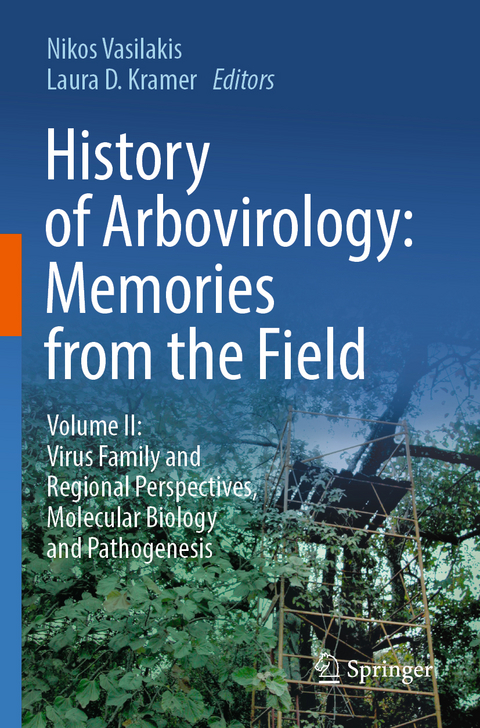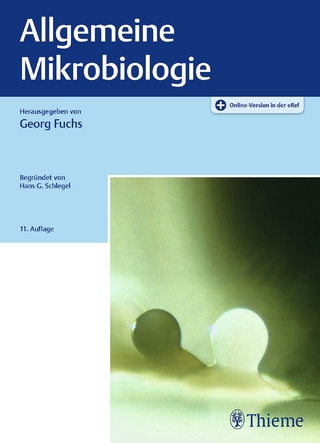
History of Arbovirology: Memories from the Field
Springer International Publishing (Verlag)
978-3-031-22005-0 (ISBN)
These books bring together a panel of expert arbovirologists who recall the history of arbovirology from very personal perspectives. In these timely volumes, the authors describe seminal moments in their experiences in the field and how they integrated these findings with lab studies to further clarify the ecology and epidemiology of diverse arboviruses. Authors identify the most pressing questions that remain to be answered, providing a basis for current research and a stimulus to engage those entering the field.
Over the last 20 years a generational gap has developed between the giants of arbovirus research and discovery and the new generation. This gap developed due to an ebbing of training and investment in passing the scepter to the next generation, leading to a lack of continuity among the generations that threatens to derail the rich history of virus discovery, field epidemiology and understanding of the richness of diversity that surrounds us. This lack of continuity may have immediate and disastrous consequences for public health when yet to be discovered arboviruses emerge. The purpose of these books is to bridge this gap by providing a historical context for the work being done today and provide continuity between the generations. To this end, the books provide a narrative of the thrill of scientific discovery and excitement of field adventures and lab studies of that generation -- essential reading for every arbovirologist, and highly recommended for all virologists and public health officials, as well as those students considering future research options. Volume I consists of the personal reflections of arbovirologists who played a significant role in the advancement of arbovirology across the globe. Volume II transitions to descriptions of region-specific and virus family-specific perspectives of arbovirology, as well as recollections of the early events of molecular advances and pathogenesis studies.
Nikos Vasilakis, PhD, FASTMH
Professor and Vice Chair for Research, Dept. of Pathology; Center for Vector-borne and Zoonotic Diseases; Center for Biodefense and Emerging Infectious Diseases; Center for Tropical Diseases; and Institute for Human Infections and Immunity
University of Texas Medical Branch, Galveston, Texas, USAProfessor Nikos Vasilakis is the Vice Chair of Research at the Department of Pathology Professor of Pathology at UTMB. He earned his BA and MA degrees in biology from Hofstra University and his PhD in arbovirology from the University of Texas Medical Branch, Galveston. His research interests have been to understand the evolution and pathogenesis of arthropod-borne viruses, virus - mosquito, and virus - host interactions. He served as Chair of the American Committee on Arthropod-Borne viruses and is the current chair of the Subcommittee on the Interrelationships Among Catalogued Arboviruses. He currently leads The Coordinating Research on Emerging Arboviral Threats Encompassing the Neotropics (CREATE-NEO), one of the Centers for Research In Emerging Infectious Diseases (CREID) funded by the National Institutes of Health.
Laura D Kramer, PhD, FASTMH
Former (retired) Director Arbovirus Laboratory l Wadsworth Center, NYSDOH l Albany, NY
Professor Emeritus, Biomedical Sciences l School of Public Health l State University of New York at Albany
Professor emeritus, Laura Kramer, earned her BA degree from University of Pennsylvania, and her PhD from Cornell Medical College. As the former (now retired) Director of the Arbovirus Laboratories of the Wadsworth Center, New York State Department of Health, she led a research program on basic and applied field and laboratory studies examining the interactions of mosquito- and tick-borne arboviruses, arthropod vectors, and vertebrate hosts, and how these interactions impact transmission dynamics as well as emergence, persistence and evolution of the virus. She retired from NYSDOH in December 2020 and is currently Professor Emeritus in the Department of Biomedical Sciences of the School of Public Health, State University of New York at Albany. She also serves as an Associate Editor of the International Journal of Infectious Diseases, a virology moderator for ProMED (Program for Monitoring Emerging Diseases) in the International Society for Infectious Diseases, and a contributing virus author for Merck Manuals in virology.
1. RNAi: The Mosquito Defense System Against Damage Due to Arbovirus Infection.- 2. A First-hand Account of the Progression of Flavivirus Molecular Biology.- 3. Sindbis Virus: Studies of Alphavirus Pathogenesis.- 4. Mechanisms of Tick-borne Virus Transmission.- 5. The Use of Humanized Mice to Understand Arbovirus Pathogenesis.- 6. Molecular Biology of Arboviruses.- 7. Mosquito-Virus-Environment Interactions.- 8. A Brief Historical Overview of the Discovery of Arboviruses in the USSR and Russia.- 9. The History of the Emergence of La Crosse Encephalitis Virus in the Driftless Area of the United States: A Mosquito Runs Through It!.- 10. "It Isn't Going to Reach Here": Venezuelan Equine Encephalitis in Texas, 1971.- 11. History of Arbovirology in Canada.- 12. Arbovirus Discovery in the British Empire: India and Africa, c. 1880-1960.- 13. History of Arbovirology in Japan.- 14. Ockelbo Disease in Sweden: Unraveling the Epidemiology, Ecology, and Evolution of Sindbis Virus.- 15. Human Arboviruses in Eastern, South-Eastern, and Southern Asia: A Brief History of Their Isolation and Characteristics.- 16. History of Arbovirus Research in Kenya.- 17. Vector Studies in the Amazon Basin Region of Peru.- 18. Zika Virus Studies in West Africa.- 19. Hemorrhagic Fevers.- 20. Chronicles of Hantaviruses: Virus Discovery to Vaccine Candidates.- 21. A History of Tick-Borne Encephalitis and Its Virus.- 22. Kyasanur Forest Disease.- 23. The Discovery of Insect-Specific Viruses in Australia: Mossies, Old Mates, and New Methods.
| Erscheinungsdatum | 01.08.2024 |
|---|---|
| Zusatzinfo | XX, 530 p. 171 illus., 121 illus. in color. |
| Verlagsort | Cham |
| Sprache | englisch |
| Maße | 155 x 235 mm |
| Themenwelt | Medizin / Pharmazie |
| Naturwissenschaften ► Biologie ► Mikrobiologie / Immunologie | |
| Schlagworte | arbovirus • Field Studies • History of Science • Virology • virus discovery |
| ISBN-10 | 3-031-22005-6 / 3031220056 |
| ISBN-13 | 978-3-031-22005-0 / 9783031220050 |
| Zustand | Neuware |
| Informationen gemäß Produktsicherheitsverordnung (GPSR) | |
| Haben Sie eine Frage zum Produkt? |
aus dem Bereich


